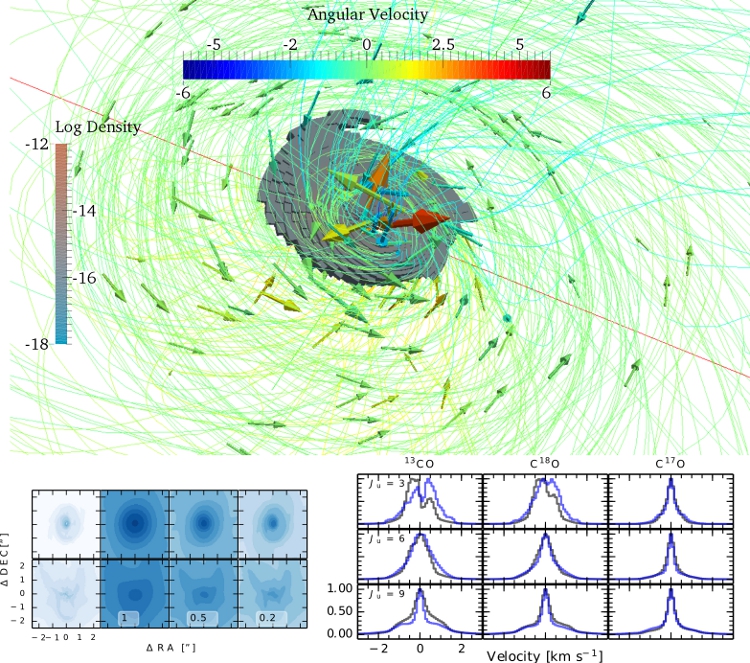| EPoS Contribution |
|
Molecular lines view of disk formation
Daniel Harsono Leiden O., Leiden, NL | |
| We present synthetic continuum and CO molecular lines during the disk formation process around low-mass stars to test disk formation scenarios with observables. 3D magnetohydrodynamics simulations of pseudodisk and rotationally supported disk (RSD) formation are adopted. These simulations are coupled with a continuum radiative transfer tool RADMC3D to calculate the dust temperature structure in order to construct a simple CO abundance structure. The continuum maps and line profiles are compared to find significant differences in the observables between pseudodisk formation and an RSD. Moment maps are analyzed for signatures of Keplerian disks. These results are compared with 2D semi-analytical models. The features that arise from disk formation and potential tests are discussed. | |
 | |
| Caption: Top: 3D disk formation MHD simulation in the inner 500 AU. The contour lines and arrows show the streamlines into the disk with colors indicating the magnitude of the angular velocity. Bottom Left: Synthetic 450 microns maps in the inner 5" region where the top panels showing the case for rotationally supported disk (RSD) formation and bottom is the pseudodisk. The left-most panels are the unconvolved synthetic image. Bottom right: Normalized synthetic CO molecular lines convolved with a 9" beams with black lines indicating the emergence of line profile from RSD formation and blue lines from a pseudodisk. | |
|
Suggested Session:
Cores to Disks | |

